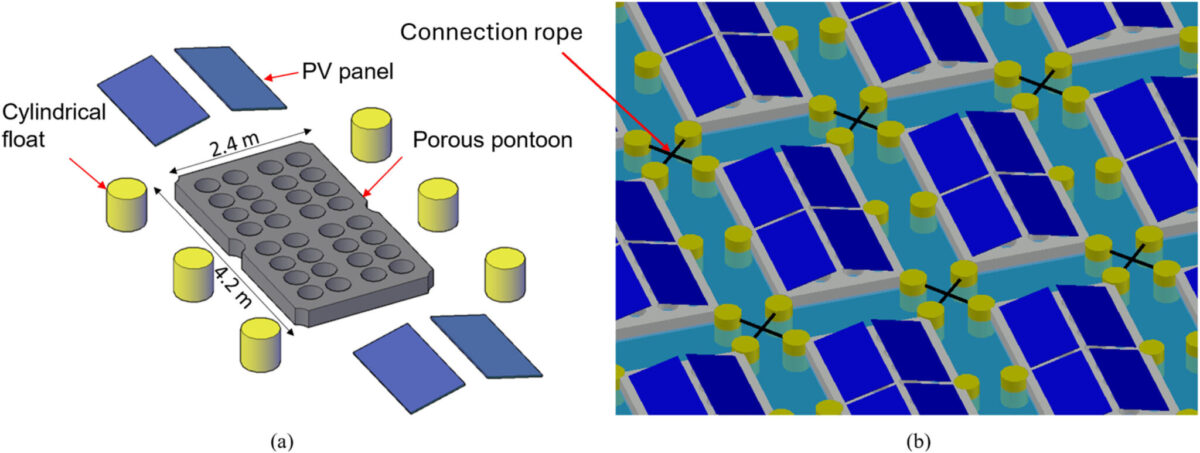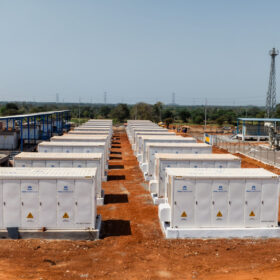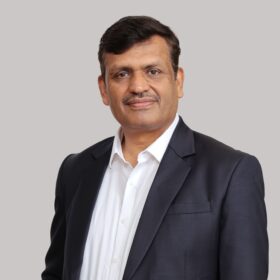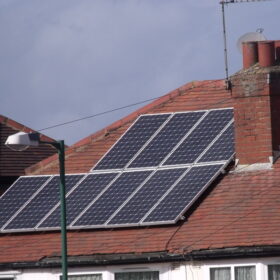Researchers at Oslo Metropolitan University in Norway have used a numerical model to assess the hydrodynamic response of a floating PV system prototype with soft connections for offshore conditions.
“Each array is composed of many standard floats, soft-connected using ropes to mitigate fatigue issues,” researcher Jian Dai told pv magazine. “Several arrays are electrically linked to each other via the floating linkage formed by standard floats. The generated power can be transmitted to a floating transformer stationed on the side for easy access via boats.”
The “soft-connected” system consists of six modular pontoons linked by mooring lines and ropes modeled as elastic bar elements. Each pontoon holds four dual-pitched solar panels and features six cylindrical floaters that provide buoyancy, hydrostatic stability, and mooring support.
The porous pontoons are designed to enhance air circulation and boost water-cooling of PV modules, while pre-stretched flexible ropes prevent collisions and allow the array to adapt vertically to wave motion. The taut mooring system, unlike catenary setups, provides restoring force through line tension, making it more suitable for deep-water deployment.
“The hydrodynamic properties and wave excitation force transfer functions for the pontoons are evaluated using potential flow solver in the frequency domain,” the scientists explained, noting that their analysis was based on the Cummins equation, which is commonly used to express the motion behavior of floating offshore structures. “The numerical model is calibrated against available experimental results under both regular and irregular waves.”

Image: Oslo Metropolitan University, Marine Structures, CC BY 4.0
The scientists tested the systems through regular and irregular tests in a towing tank at Universidad Politécnica de Madrid, with wave heights ranging from 1.9 meters to 15.3 meters. Through the numerical model, they tried to predict the motion responses and mooring forces of the system.
“The case study results show that the heave motions are virtually not affected by the variations in the mooring line properties except for short waves,” they explained. “Such variations are found to affect the surge motion responses amplitude operator (RAO) substantially in the vicinity of the natural period around 6 s. The effect diminishes quickly for waves outside this frequency range.”
They also found that, under irregular wave conditions, the mooring stiffness provides restoring forces to ensure system stability.
“The mooring stiffness influences the tension forces more than the applied pretension forces. An increase in mooring stiffness leads to higher variability of the mooring tension force,” they added.
The research team concluded by saying that the tests they conducted showed the complexity of assessing the stability and reliability of floating PV systems under offshore wave conditions.
“The parametric study results show that the float heave motions are insensitive to the variations in the mooring line properties except for very short waves,” said Dai. “This implies that in offshore regions, the floats are virtually transparent to incoming waves and follow the wave motions in the heave direction, which is desirable.”
The researchers introduced the system in “Numerical study of soft-connected modular offshore floating photovoltaic array,” which was recently published in Marine Structures. The research group included scientists from the Technology Centre for Offshore and Marine, Singapore (TCOMS), and Norway’s University of Agder.
“The contribution of the study is three-fold,” Dai said. “First, fundamental insights have been provided into the dynamic behavior of an interconnected floating array under wave excitation. Second, a practical calibration procedure has been proposed to facilitate the numerical calibration process for such multi-body systems. Third, the influence of mooring parameters has been demonstrated to facilitate future improved designs of the floating PV array.”
Dai said the team will conduct large-scale model testing at Singapore’s TCOMS wave basin in November 2025 to quantify the offshore floating PV system’s hydrodynamic behavior and uncertainties. The results will support development of reduced-order models for future research and digital twin applications.
This content is protected by copyright and may not be reused. If you want to cooperate with us and would like to reuse some of our content, please contact: editors@pv-magazine.com.









By submitting this form you agree to pv magazine using your data for the purposes of publishing your comment.
Your personal data will only be disclosed or otherwise transmitted to third parties for the purposes of spam filtering or if this is necessary for technical maintenance of the website. Any other transfer to third parties will not take place unless this is justified on the basis of applicable data protection regulations or if pv magazine is legally obliged to do so.
You may revoke this consent at any time with effect for the future, in which case your personal data will be deleted immediately. Otherwise, your data will be deleted if pv magazine has processed your request or the purpose of data storage is fulfilled.
Further information on data privacy can be found in our Data Protection Policy.